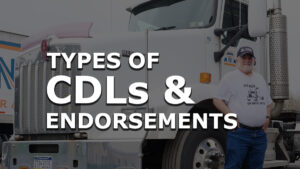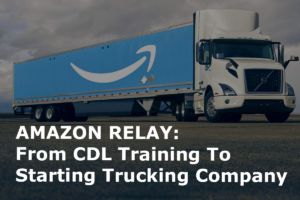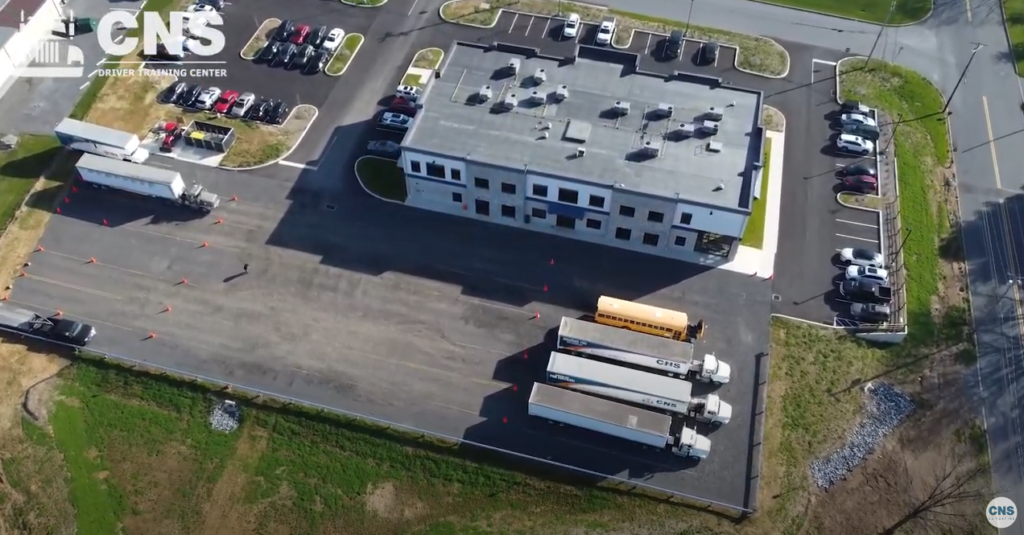Here’s how to upshift, downshift, and double clutch a manual transmission semi-truck.
Shifting a manual semi well is a matter of feeling, and mastering it just takes practice.
Before we give you tips on shifting up, shifting down, and double clutching (or floating gears), let’s talk about the basics.
How a clutch and transmission works
The main purpose of the clutch is to engage and disengage the connection between the engine and the transmission. In other words, the clutch connects and disconnects the power from your engine to your wheels, via the gearbox.
When the clutch pedal is pressed down, the clutch disengages, separating the engine’s power from the transmission. If you don’t use enough pressure, you will grind a gear.
On the other hand, if you push the clutch pedal to the floor, you will engage the clutch brake. The only time it is necessary to have the clutch brake engaged is for moving the vehicle from a dead stop.
Never use the clutch brake while the vehicle is rolling as this will eventually burn out the clutch brake, which is a big maintenance cost.
To save money, and lengthen the life of your clutch brake, only push the clutch down half to three-quarters of the way every time you shift while the vehicle is moving.
Of course, each vehicle is slightly different, so practice getting the feel right by easing the clutch in and out, never using a rapid leg movement.
How to shift up a gear in a manual transmission semi
Each tractor has a different optimal RPM range, which you can find in the vehicle’s driver manual.
While driving, watch the tachometer to measure the truck’s RPM and shift up once it reaches the ideal range. It will eventually become second nature to know what speed lines up with the RPM to shift up.
There are 4 steps when shifting up a gear:
- Release the accelerator, shift to neutral, and push down on the clutch (half to three-quarters of the way) at the same time.
- Then, release the clutch and let the gears and engine slow to the revolutions per minute (RPM) needed to switch to the next gear.
- After achieving the correct RPM, push the clutch (half to three-quarters of the way) and shift to the necessary higher gear simultaneously.
- Finally, disengage from the clutch while also pressing down on the accelerator again.
At our 1-on-1 CDL school, our instructors will give you plenty of time behind the wheel to get comfortable with this process.
How to shift down a gear in a manual transmission semi
There are different times you need to downshift gears, from slowing down due to traffic, before descending a hill, and before angling into a curve.
For downshifting before descending from the top of a hill, you should slow the truck and downshift to a lower gear so the truck’s speed is slow enough that you can control the descent without significant brake use.
The issue is that heavy reliance on the brakes will cause them to overheat, wear down, and lose their stopping power.
There are 4 steps to downshifting:
- Release the accelerator before pressing the clutch (half to three-quarters of the way) and shifting into neutral simultaneously.
- Then, disengage the clutch, push the accelerator again and match the gear speed to the RPM needed when you’re in the lower gear.
- Once complete, push the clutch (half to three-quarters of the way) and switch to the lower gear at the same time.
- Release the clutch for a final time while also pressing down on the accelerator.
How to double clutch in a manual transmission semi
Double clutching is not complicated, but new professional truck drivers are often intimidated by floating gears, or granny shifting, because it can be difficult to shift smoothly.
The simplest way of understanding it is manually matching your RPMs to your truck’s speed. Once the speed and RPM match, you can set the shifter into gear.
When you’re driving, both feet are working in harmony with the other and your gear shift. Just feather it in and out and don’t force the shift.
There are three steps for double clutching:
- Push the clutch pedal down (half to three-quarters of the way) once to slide it into gear
- Push the clutch pedal down (half to three-quarters of the way) to slide it out and
- Then double clutch again (half to three-quarters of the way) to slide it back into the next gear.
Removing your foot from the gas eases the shifter, making it easier to change gear. You can change the gear quickly and put your foot back down.
The change in when to accelerate or not is the main problem for new truckers when double clutching. For example, truckers should accelerate to a certain RPM and then take their foot off the gas when they upshift.
As we mentioned earlier, when you’re double clutching when moving down the road, it’s only necessary to push the clutch in about half to three-quarters of the way each time.
Here are some tips to help you know you are double clutching correctly:
- Listen to the engine revs to make sure it does not drop so low that when you ease out the clutch that you’re lugging the motor, especially on a hill.
- Don’t put any power to the throttle for five or ten seconds so you are not engaging power at the same time as shifting gears.
- When you ease out on the clutch, make sure that your revs are high enough that you won’t stall the truck.
- If you sense resistance, you’re not doing it correctly. The shifter should slide in and out easily when done correctly.
This requires getting the feel of your tractor as some vehicles find it easier to slide in and out of a few gears.
For example, some Peterbilt’s like the clutch when going from low range to high range. But after getting into a certain range, it shifts a little more easily without the clutch.
Note: Mechanics recommend using the clutch because it eases the transition from the vehicle being in drive and not being in drive, and then sliding back into drive again for the transmission.
Receive Best-In-Class CDL Training at CNS Driver Training Center
Now is the time to receive 1-on-1 CDL training with CNS Driver Training Center and get your CDL license.
Learn more about all levels of truck driver training, testing and CDL permit test preparation that we offer at our CNS Driver Training Center.
Don’t just take our word for it. With over seventy 5-Star Reviews, we have a proven track record.
“From the first phone call to schedule the training to when I walked out with my permit stamped “passed” everyone was nothing but professional and VERY helpful. They were able to schedule my training and test in a way that worked perfect for my job and home life. I had the pleasure of working with three different instructors Daryl, Jeff and Sherry. Each one of them brought their own real-world knowledge and experience to the table and by the end of day three I was 100 times more confident then when I walked in the door. I recommend this program to anyone who needs that one-on-one instruction and needs a flexible schedule.”
Tom DeWess
“I highly recommend this CDL training facility! From day one with talking to McKenna having her inform me on what I need to do and what to expect and getting my classes scheduled to a schedule that worked for me, To Daryl and CJ for being my instructors, both are very knowledgeable and nice to work with, CJ being my main instructor, he is a great guy and very good at what he does, sharing real life scenarios that help in teaching you all you need to know to pass your CDL tests, I credit his patience and style of teaching for me passing my test as well as I did. Jeff was great as an examiner, very professional and easy to get along with. Everyone I had the pleasure of dealing with at CNS , I rate 5 stars.”
David Horst
If you have questions about our CDL training packages, give us a call at 717-496-9145 or email us at support@cnstrains.com.






